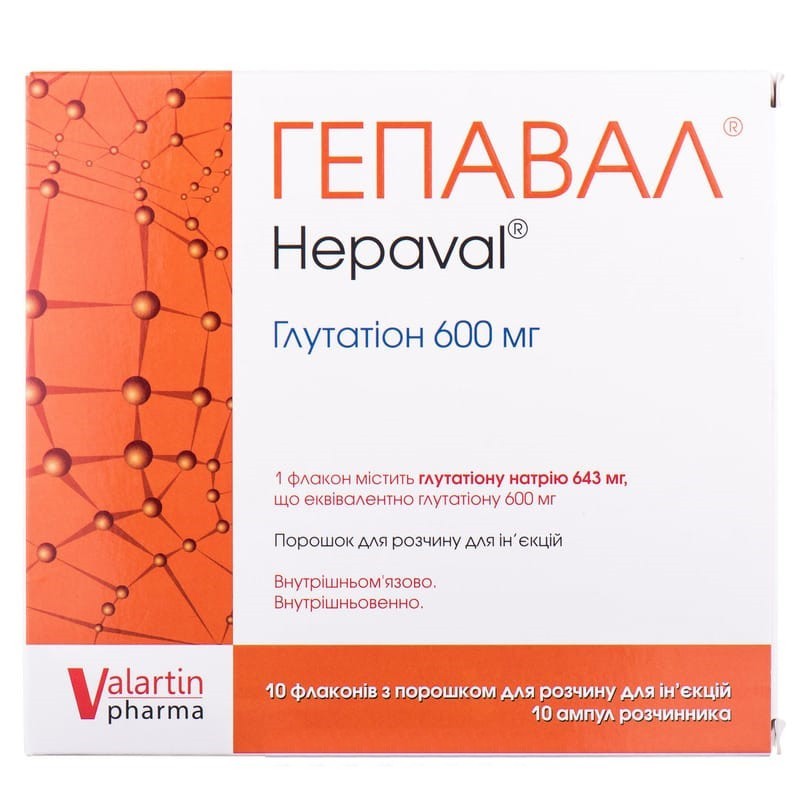



 Secure and encrypted payment processing
Secure and encrypted payment processing We ship to over 40 countries including the USA, UK, Europe, Australia and Japan
We ship to over 40 countries including the USA, UK, Europe, Australia and Japan Guaranteed refund or reship if you haven't received your order
Guaranteed refund or reship if you haven't received your orderPharmacodynamics
Glutathione - a tripeptide - a natural component of the cells of all body tissues. Its wide distribution is associated with a wide range of biological functions and is fundamental to numerous biochemical and metabolic processes.
The sulfhydryl groups of cysteine, which is part of glutathione, are powerful nucleophilic agents. In this regard, they become the main goal of the electrophilic attack of chemicals or their active metabolites, which leads to the inactivation of potentially toxic exogenous substances. Thus, the drug has a protective effect on vital nucleophilic sites, when attacking which begins the process of cell damage.
In addition, glutathione, reduced as a result of interaction with a large number of oxidized organic metabolites, forms less toxic conjugated compounds, which are subsequently more easily metabolized and excreted as part of mercapturic acids.
Given these properties, glutathione is prescribed in the case of hepatotoxicity reactions, the development mechanisms of which may be ethyl or drug hepatotoxicosis or pathogenetically caused hepatotoxicosis associated with impaired detoxification mechanisms.
Pharmacokinetics
After administration, glutathione is predominantly distributed in red blood cells, while in plasma it is rapidly cleaved by gamma-glutamyltranspeptidase and gamma-glutamylcyclotransferase. Thus, the plasma level of reduced glutathione even after administration in high doses is insignificant (Cmax in plasma, ≈1 nmol / ml 5 min after administration of 600 mg), while cysteine metabolite levels are higher (Cmax in blood plasma ≈17 nmol / ml). The blood concentration determined on whole blood reaches a value of about 100 nmol / ml 5-10 minutes after the administration of 600 mg of glutathione. The concentration of the drug in the blood gradually decreases, almost reaching the initial values ≈60 minutes after administration.
Prevention of neuropathy induced by chemotherapy with cisplatin or other similar substances.
In severe cases of damage: 600–1200 mg (1-2 vials) per day by i / m or slow iv.
With an average degree of damage: apply half of the above dose.
Preparation of the drug for administration
In the case of v / m use, the drug must be completely dissolved directly in the vial using the solvent in the kit.
In case of iv use, the drug should be dissolved with the solvent from the kit (water for injection) and administered either by directly slow injection or by infusion after adding the prepared solution to 20 ml of sterile solution for infusion.
Hypersensitivity to the active substance or other components of the drug.
In rare cases, nausea, vomiting, headache, and skin rashes are possible. these reactions usually disappear after discontinuation of therapy.
Use during pregnancy or lactation. although glutathione did not show any signs of embryo- and fetotoxicity during experimental studies, its use in pregnant and lactating women is not recommended.
The ability to influence the reaction rate when driving a vehicle or working with other mechanisms. Glutathione does not affect the ability to drive a vehicle or work with other mechanisms.
Unknown
There is no information on overdose cases.
Store in the original packaging at a temperature not exceeding 25 ° C.
The recovered solution is stable for approximately 2 hours during storage at room temperature and for at least 8 hours when stored at 0–5 ° C.